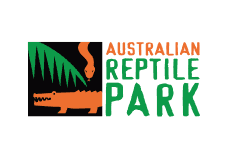Beak-ing News! Three Little Hatchings In The Stadium Nest As Our Birds Deliver For the Sixth Straight Year
It takes quite a story to turn heads away from the FIFA Women’s World Cup training action taking place on the Central Coast this week.
But eyes are looking upwards today with confirmation that Our Birds, the famous Eastern Osprey pair who have mated for life and call Industree Group Stadium home, have three hatchlings in their light tower nest.
The three little chicks have been spotted on stadium CCTV. It is the sixth straight year that Our Birds, who the locals have dubbed Rosie and Hutch, have produced offspring in their Stadium nest.
The arrival of the Osprey hatchlings coincided with the arrival of the England Lionesses at Industree Group Stadium (or Central Coast Stadium as it is known under “clean stadium” regulations for the FIFA Women’s World Cup 2023.
The Euro Champions are based on the Central Coast for the duration of the World Cup, training on the Stadium pitch and staying at Crown Plaza Terrigal Pacific.
As the Lionesses strode on to the Central Coast pitch on Tuesday, up popped three little heads from under Rosie.
“It has caught us all by surprise this year as we had not spotted the eggs in the nest as we did last year,” revealed Venue Manager Kath Casey.
“But the timing of the hatchlings is interesting given that it appears to have unfolded on the very day the Lionesses turned out at the Stadium for their Open Training Session in front of some 2500 fans.”
Bird watchers from around the globe have taken an interest in the Eastern Osprey family that enjoys the best seats in the house at Industree Group Stadium.
Experts in the field of Ornithology – the branch of zoology devoted to the study of birds – tell us that the position of the Osprey nest, high on the Stadium’s south-eastern light tower, provides a safe haven for hatchlings given that any potential predators can easily be spotted by their doting parents.

Bird’s eye view . . . the light tower on the right of this picture is where the Eastern Osprey pair have set up their home
With the expansive Brisbane Water to the south of the Stadium, the Osprey (colloquially known as the Fish Hawk) are able to secure a regular supply of fresh food.
It is unclear how important this breeding pair is to the long-term survival of the species on the East Coast, but environmental experts say it is likely to be important given the relatively low numbers of known breeding pairs.
The experts say we can expect to see our chicks almost adult size by five weeks and ready to fly by seven to eight weeks. It is a very fast track growth spurt fuelled by their very high protein diet of fish brought in by the adult male. Go Hutch!
Last year’s chicks stayed with the Osprey parents until the summer and have since been spotted at other locations on the Central Coast.
“We believe there may be a new Eastern Osprey pairing at Woy Woy, directly across the water from us in Gosford,” revealed Stadium Assets & Operations Manager Mick Magurren.
Since 2018, Mick has been keeping a close eye on the Osprey and reporting back to local authorities.
“We’ve been working with Central Coast Council’s Environmental Management Co-ordinator Mairin Ireland to help these important birds keep breeding, without impacting on our staff, or the community’s safety,” says Mick.
“In 2018 the nest above our Stadium was perched on a light tower, close to the lights, making maintenance of the tower difficult and causing the closure of seats in the bay below as sticks and debris continually fell from the nest.
“Building on the success of moving a nest at the Erina depot in 2012, our team worked with some external specialists and installed a purpose-built platform for the pair to nest on in 2019. We also added a CCTV so we can keep an eye on the family.”
We’ll be sure to update you on further developments with the Osprey hatchlings. Follow the updates on the Industree Group Stadium Facebook or Instagram pages.











